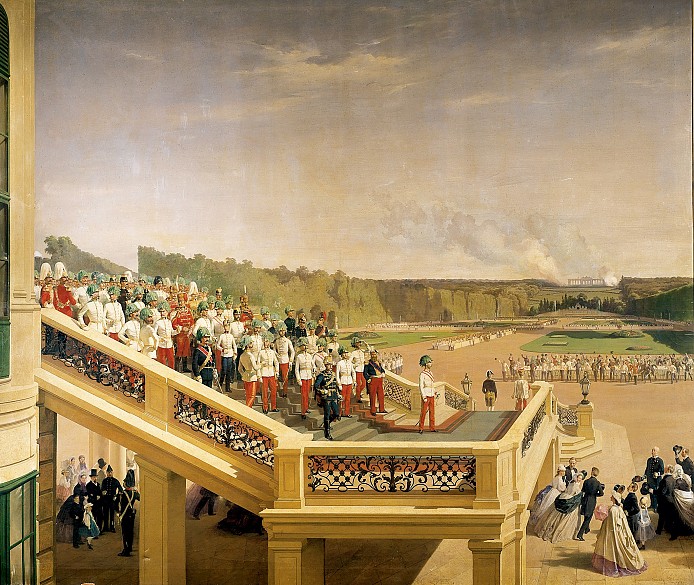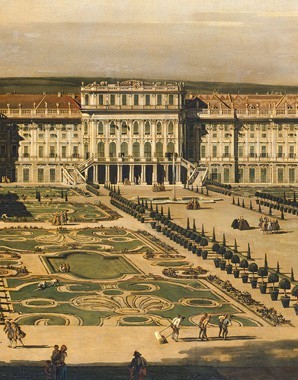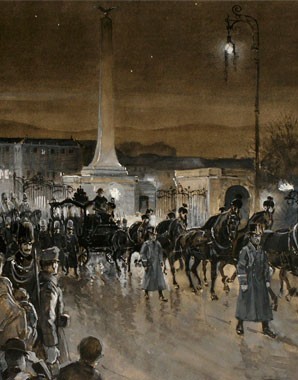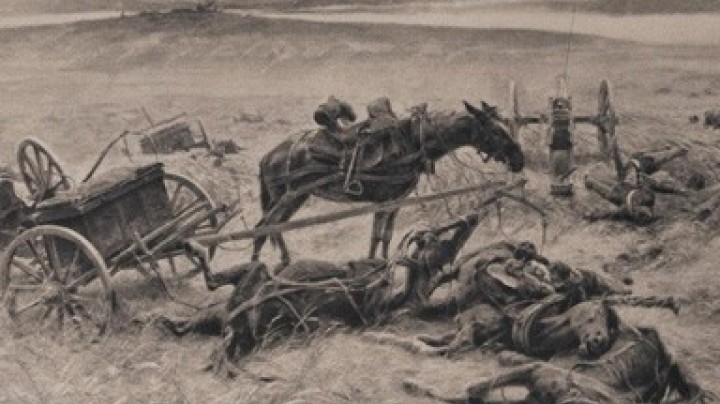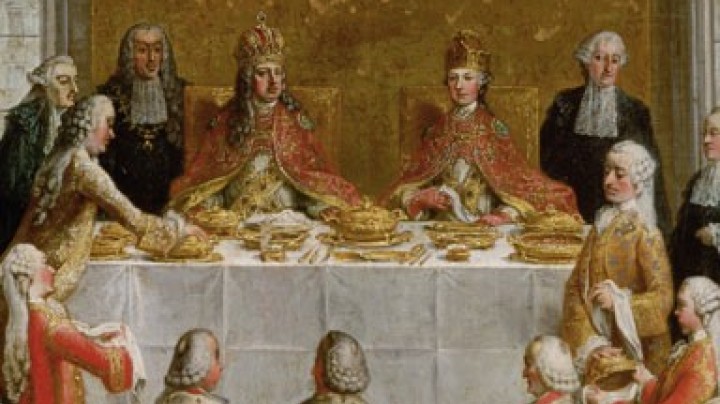Schönbrunn – final glory and last arena of the Monarchy
Franz Joseph was born at Schönbrunn, and it was there that he died. The palace was not only the official residence of the emperor; he had had special ties with the summer residence of the family since childhood, and in his old age rarely left the palace even in winter.
When the 18-year-old Franz Joseph succeeded his uncle, Emperor Ferdinand, in 1848 he took over Schönbrunn together with its neo-Rococo furnishings, a decorative programme that reflected the neo-absolutist form of government favoured by the young emperor.
The reception rooms were all furnished and decorated in the typical white, red and gold colour scheme. While the private apartments had been merely adapted for Franz Joseph in 1848, his impending marriage to Elisabeth of Bavaria in 1854 provided the occasion for them to be thoroughly renovated. A suite of rooms adjoining the emperor’s apartments in the west wing of the palace was furnished for Elisabeth. Facing the Privy Gardens on the Hietzing side of the park, it consisted of an antechamber, an audience chamber, a study and a drawing room. The marital bedroom had dark palisander furniture together with blue and white wall-hangings and upholstery, which was most probably little to Elisabeth’s personal taste.
It is thus not surprising that Elisabeth had a private ‘garden apartment’ furnished for herself on the ground in 1862, accessed via a spiral staircase from her official apartments on the first floor. These rooms reveal far more about Elisabeth’s predilections: she had the walls hung in lilac, her favourite colour, and had direct access made to the gardens which she could use unnoticed by palace staff. Nearby was the indoor riding school (today housing the collection of imperial carriages) where Elisabeth practised her dressage. She enjoyed riding in the more secluded parts of the park at Schönbrunn, often accompanied by her dogs: ‘At Schönbrunn, the Gloriette and those parts of the park that do not please the public belong to me’.
Schönbrunn Palace was originally the summer residence of the imperial family, with winters being spent at the Hofburg. In his old age, however, Franz Joseph made Schönbrunn his year-round main residence, only visiting the Hofburg on state occasions. On 21 November 1916 he died, aged 86, in his bedroom at Schönbrunn. Two years later his successor, Karl I, signed the document sealing his formal abdication and relinquished all participation in the affairs of government. Schönbrunn not only reflected the fading splendour of the Monarchy but was also witness to its end.
